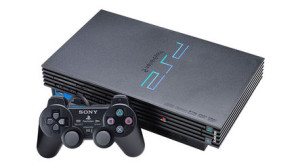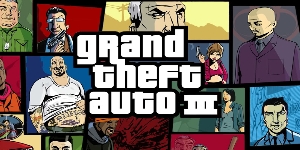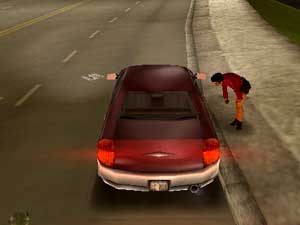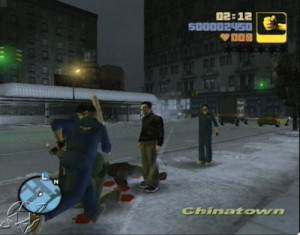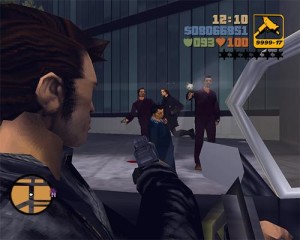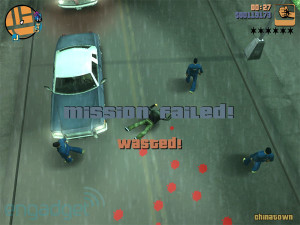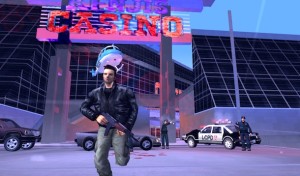Do you remember that day you received your first video game console? How about that time you discovered a secret stage that none of your friends knew about? Those days of being so excited for the latest iteration in a long-running series, only to be disappointed or have your expectations exceeded beyond your wildest dreams. That is what the Video Gamer’s Experience is all about. Now lets take a trip down this electronic memory lane.
By the fall season of 2001, the second Sony-created video game system had been available to purchase in North America for over a year. Aptly named the “Playstation 2” (or “PS2”), Sony looked to continue its dominance in the video game market by surpassing its then-current competitors (Nintendo’s “Nintendo 64” and Sega’s “Dreamcast”) thanks to an ever-growing library of quality games, media playback (being a DVD/CD player as well as a gaming console) and positioning itself head and shoulders above any future systems coming down the pike (Nintendo’s “N64” successor the “Gamecube” and Microsoft’s technically superior “Xbox”).
Sony had done a wonderful job of winning me over during the fifth generation of console gaming, convincing me to spend at least three hours experiencing the original “Playstation’s” catalogue of games compared to maybe one hour for any time I turned on my N64. With Christmas 2001 coming ever so quickly, the time to move forward into console gaming’s budding sixth generation was now. Though it was a sleek system featuring revolutionary ideas (such as online gaming via a built-in modem), Sega’s “Dreamcast” just didn’t have the same appeal to the once closed minded gamer who couldn’t wait to own a Sega “Genesis” almost a decade earlier. I was officially a “Sony-pony” now (the nickname for Sony fans).
During some cold and at times icy December Saturdays, I spent a majority of my day working at a neighbor’s fruit stand downtown. The goal was to simply earn enough money to purchase my PS2 for the holidays. Going through my wallet two weeks before Christmas, I soon discovered that I had enough for the system … but the games would be lacking. My mom made a deal with me that she’d throw in a hundred dollars toward the purchase of my PS2 while I covered some of the games I asked my parents to buy. I didn’t hesitate in agreeing to the offer, leaving the market stand for a round of shopping that concluded with me owning “Final Fantasy X”, “Dragon Ball Z: Budokai” and “WWF Smackdown: Just Bring It”. Interestingly enough, the game that interested me the most would be left in the willingness of my parents.
That game was none other than the third numbered iteration in Rockstar Games’ “Grand Theft Auto” series. Having played the first “GTA” on my original Playstation, I didn’t pay much attention to the announcement of “Grand Theft Auto III” arriving on my eventual system of choice. I’ve never been a big fan of top-down games (where the game’s camera literally looks down on the action like it’s being filmed from a helicopter).
The original “GTA” and its successor didn’t change my dislike for top-down games. But then the previews started rolling in for “GTA III”. This wouldn’t be another top-down experience. Instead, “Grand Theft Auto III” embraced the three-dimensional world only these most recent consoles could produce. The game was being promoted as this elegant mix of Mafioso intrigue, action-oriented missions and maniacal mayhem spread across an entire city. Christmas day 2001 and beyond would let me see if the expectations could be met.
Did I Complete “Grand Theft Auto III”?
“GTA III” ushered in the new wave of “sandbox” gaming where you could mostly go anywhere and do almost anything. You want to race locals? You could do that. Like to drive onto highways and bridges in an effort to look upon the city and take in this virtual world? That was possible. Became angry with yourself about picking up a hooker to the point you wanted your money back and all you had was a baseball bat in your arsenal? Okay, maybe you weren’t angry, but needed to see if it was possible to have your cake and eat it too.
Thanks to the various magazine previews, one would believe entering this new rendition of Liberty City (the series’ main locale at that point) would prove to be a daunting task for anyone; experienced “GTA” gamer or not. In actuality, “GTA III” threw you into a small part of Liberty City (the “Portland” area) letting you getting the hang of the game’s capabilities, storyline and overall feel. From the opening credits’ groovy tunes until the final mission, you are constantly tossed from the self-induced lulls of exploration to the throws of insanity. Accidental hit & run moments could quickly escalate into police chases featuring military support if your “Wanted” level got too high. As the actual story progressed and your character (who was officially unnamed until two games later) becomes affiliated with certain criminal organizations, even random characters from various gangs and factions come after you if you’re in the wrong part of town.
The game’s difficulty level would, obviously, increase as the world and your abilities expanded. You earned more destructive weapons, armor to protect yourself during those wild shootouts, and even fly (though the Dodo was a piece of junk aircraft). Everything would eventually culminated during the game’s conclusion featuring tons of enemies from the various gangs you had either befriended or antagonized (The Cartel being the most powerful) and the need to shoot a two-faced jezebel.
The final mission was, and still is, a daunting experience where failure is a necessity in understanding just how to make it through this checkpoint-less experience (none of the missions had checkpoints, mind you). The final mission proved to be as frustrating as it was rewarding when seeing the last cut scene and what led to a dark, yet hilarious pre-credits moment.
While I beat the storyline and gained a great selection of weapons, I never truly attained that 100% completion rating. Before the days of Youtube and comprehensive guides featuring pictures and text spread throughout the internet, the gamer looking to find all the hidden packages and special vehicles truly had to put in a great deal of effort. And that requirement just wasn’t conducive or helped me invest myself into the “GTA III” world when I gained enough joy starting riots while using cheats codes that initiated sheer anarchy.
Did “Grand Theft Auto III” Live Up to the Hype?
“Grand Theft Auto III” was a game unlike any other at the time. Most of your craziest fantasies could become a reality without thinking about the real-life consequences of using a Molotov cocktail to blow up a mob boss’ car. “GTA III” allowed the gaming community to experience a world that almost felt livable, breathing with a true heart and soul. Once you entered Liberty City, you believed you never wanted to leave.
Part of this feeling came from the variety of radio channels available any time you entered a vehicle. Songs like Paul Engermann’s “Push it to the Limit”, Royce da 5’9”’s “I’m the King”, and Craig Gray’s “Fade Away” made it hard not to bounce your head and sing tunes both known and unknown to the listener. And who could forget about the talk show station, “Chatterbox”. Very few audible moments in gaming history surpass Chatterbox host Lazlow interviewing relationship expert/pimp, Fernando Martinez. Real-life radio just couldn’t compare to the advertisement parodies and beautiful musical mix. But this game wasn’t without flaws.
With “GTA” entering a 3D plane came the problems of targeting and the camera. When in the middle of shootouts, the targeting system showed its shortcomings. At times you’d find yourself locking onto an enemy far in the distance rather than the one two feet in front of you pelting you with bullets. The camera offered little to no help at times, making close quarter combat situations almost impossible as it would swing around and underneath you; forcing you to lose track of your target or miss completely.
Being so controversial in nature, “GTA III” caused the video game industry to take another black eye from watchdog groups and parents alike. The game that was rated and intended for mature audiences at and above the age of seventeen in North America gave any non-gamer ammunition to claim video games were a growing plague for adolescent minds. I can attest that showing my parents a scene where I crushed an enemy while he was locked in the trunk of a car made them question how this game even came into existence. But having raised their son to understand the difference between fiction and reality didn’t worry about me starting a shooting spree (and I haven’t; or I wouldn’t be writing this right now).
Should You Play “Grand Theft Auto III”?
As great as “GTA III” is, time has not done it well. Since the game’s original release, sequel after sequel has occurred until the series reached beyond the Playstation brand. And with each sequel came an expansion on the mission structures, stories and game play “GTA III” emphasized, but hadn’t perfected. If you played any “GTA” post-III, it’s hard to go back and enjoy its now relative simplicity.
Improvements such as targeting, camera work, the ability to fly and swim effectively won’t be available to players while jumping into the PS2/Xbox/Android/iPhone version of Liberty City. If you can ignore the shortcomings that weren’t so short for gamers who played the game before its successor (“Grand Theft Auto: Vice City”), you’ll find a wonderful story featuring an array of memorable characters topped off by unbridled mayhem.


